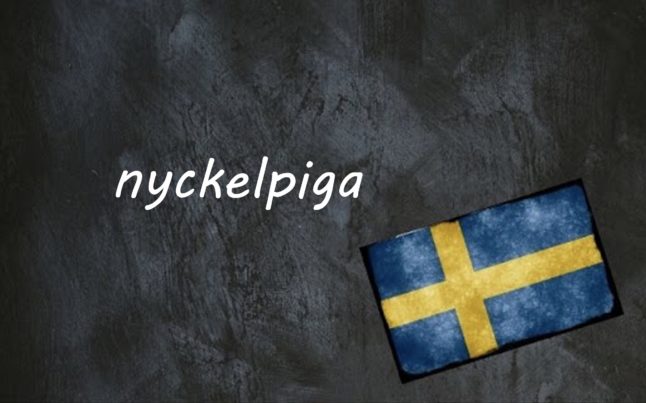A tråkmåns is ‘a person who bores you, a boring person’, but where does this word come from, and why is the name Måns in it?
The first part of the word is quite straightforward, tråk- comes from tråkig, which simply means ‘boring’. But what is it to tråka? That is the root form, and it has a bit more depth. It can mean to ‘pick on someone in a friendly manner’ or ‘to make someone feel tired and fatigued, particularly through boredom’.
But the story does not end there, there is yet a deeper meaning that is even more interesting.
Tråka has the same origin as trycka which means ‘to push’. That not immediately apparent relationship might make a bit more sense if you think of English expressions like ‘pushing someone’s buttons’ or ‘pushing someone to the limit’. Tråka in this even older meaning used to mean ‘to stop’ and ‘to work with toil, strive, to be forced to endure something with suffering’ or ‘to live out a laborious and tiresome, troubling life’. In other words being pushed to one’s limit in some way or to stop something altogether.
So tråk- in tråkmåns is something like ‘bore-’ in ‘boredom’ (if the ‘bore-’ in ‘boredom’ indeed originates in ‘to drill, wear at’), the pushing and drilling both wearing at existence.
But why Måns? Is it even the name? It appears so. But the reason is not very clear. The name Måns together with a few other names, namely Jakob and Johannes, have long been used as epithets, though not in their original form. Jakob appears is -jåp, as in snåljåp, roughly meaning ‘cheapskate’. Johannes, which is the Swedish version of John, meaning ‘God is Gracious’, appears as -jöns, as in dummerjöns, which roughly translates to ‘a stupid person’.
But what about Måns, is that not the original form of the name? No, Måns is in fact a derivative of Magnus, which means ‘the great’.
According to Veckans språkhistoria, a page on Facebook that delves into linguistic stories, a stupid person would back in the 1600s be called a jöns and a boring one a måns. For some reason or other people then felt the need to add dummer- to jöns and tråk to måns, dummer meaning ‘a stupid person’, just to make that perfectly clear.
Well, there you have it, Swedes are nothing if not perfectly clear.
Calling someone a tråkmåns is not that bad. A good situation to bring it out is if your friend is having second thoughts about joining you for a night out on the town. See if you can try it out this weekend. Good luck!
Example sentences:
Sluta va en sån jävla tråkmåns!
Stop being such a god damned bore!
Vem kallar du tråkmåns, din dummerjöns?
Who you calling a bore, stupid?
Villa, Volvo, Vovve: The Local’s Word Guide to Swedish Life, written by The Local’s journalists, is now available to order. Head to lysforlag.com/vvv to read more about it. It is also possible to buy your copy from Amazon US, Amazon UK, Bokus or Adlibris.



 Please whitelist us to continue reading.
Please whitelist us to continue reading.
Member comments